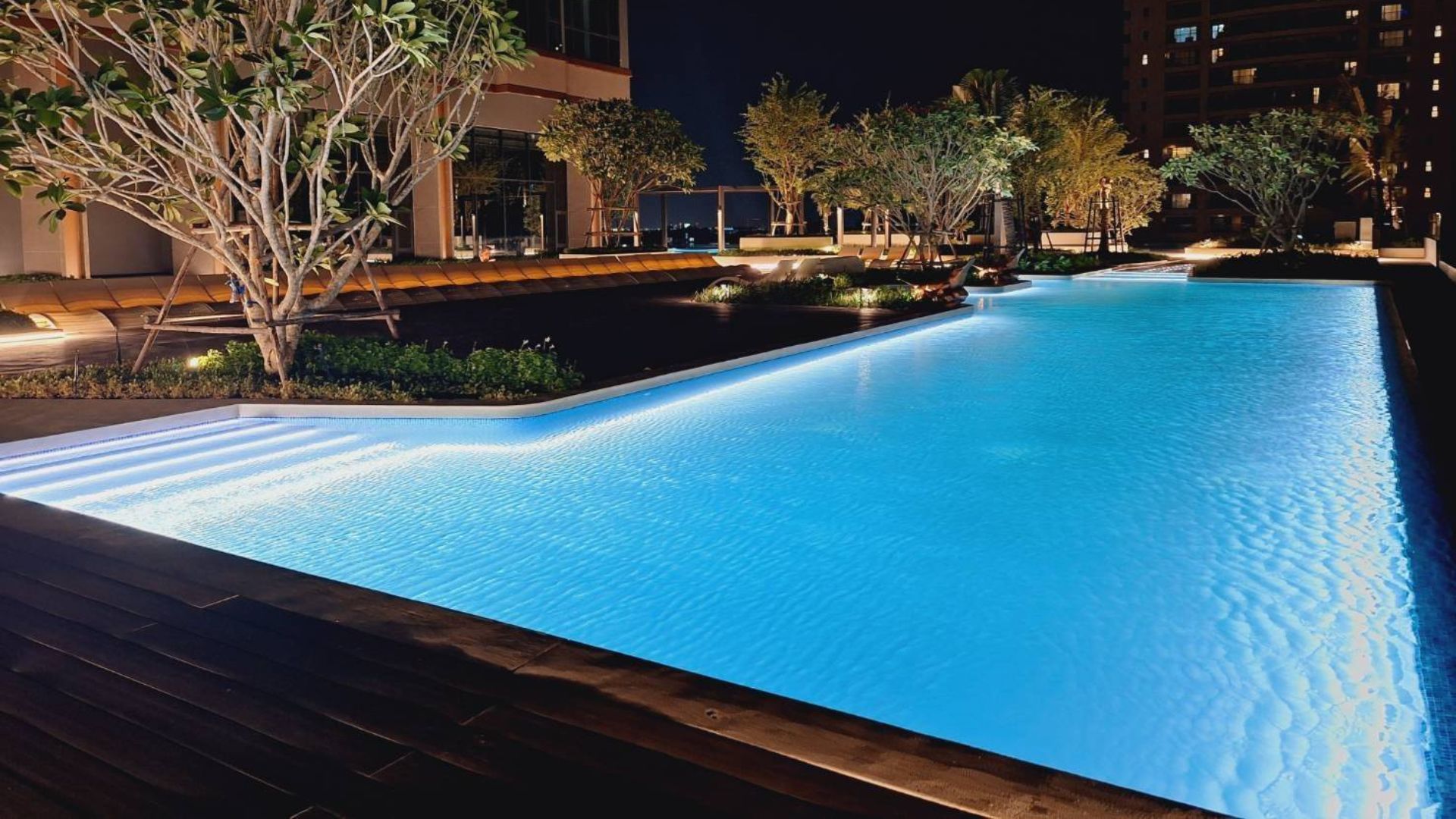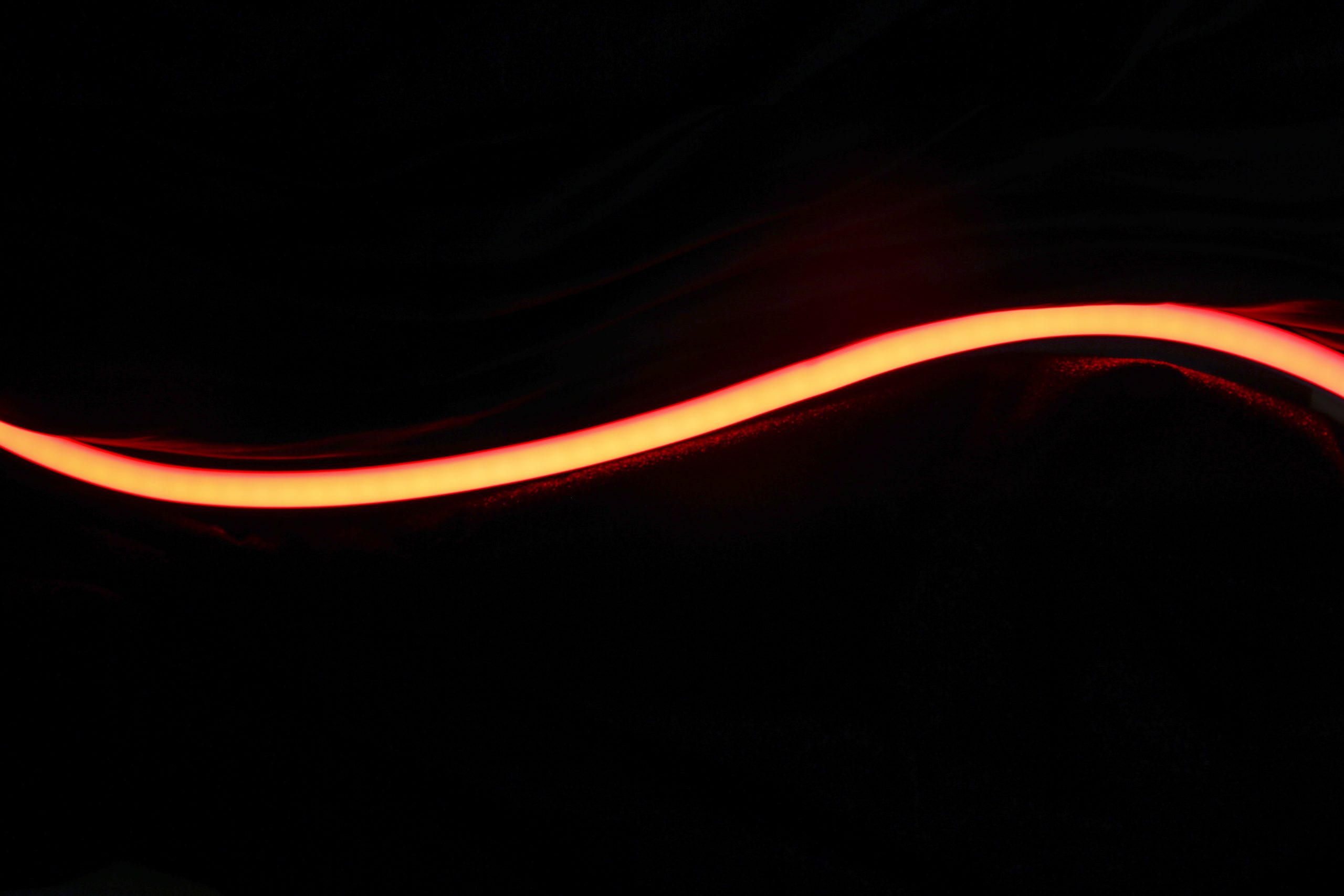Last Updated on 2 years ago by meredith.wang
Flexible neon LED strips have gained traction recently with its bendability and versatility in creating stunning space. The flexibility of these neon linear lights is what separates from other types of luminaires. There are many kinds of flexible neon LED light strips available on the market that are made by different materials, chiefly among them silicone and PU. In this article, we will deep dive into these two type of neon strips and help you better understand them in terms of where they excel and fall short of.
Factors to Look at When Making the Encasing of Neon Flex Lights
Flexibility
The material needs to have excellent tear resistance, good physical and mechanical properties, in order to withstand rough tearing, and it needs to fully rebound after being stretched.
Transmission
Transmission of light is one of the important indicators to measure the optical properties of the material. The level of transmission directly affects the quality and performance of neon strips.
Thermal Conductivity
The longer the light strip works, the hotter the components within grow. Poor heat dissipation will cause the PCB to become hot, potentially causing components to fail and shorten the service life of the product. Therefore, heat dissipation become one of the priorities in the designing of light strips.
Thermal Expansion & Contraction
Thermal expansion occurs when you heat a material. Thermal contraction occurs when you cool the material down. Neon flex strips are widely used in all kinds of environments, such as chemical plants, seaside and other outdoor locations, and may undergo fluctuating temperatures during the day and at night. The coefficient of thermal expansion is the rate at which the size of a material changes with respect to temperature change.
Flame Retardancy
Flame retardant materials can inhibit or delay combustion without burning easily. This property is especially important for indoor applications.
Stain Resistance
Stain resistance refer to the material’s ability to resist dirt adhesion, or the ability to easily remove dirt even. If things like dust are attached to the surface of the light strip for a long time, it will affect the luminous effect.
UV Resistance
The material needs to be UV resistant if it is to be used outdoor for long term because extended exposure to strong sunlight could cause yellowing or aging, thus compromising the ultimate lighting.
Weather Resistance
Weather resistance refers to the ability to withstand, resist, or endure severe atmospheric weather conditions, such as extreme hot or cold temperatures, humidity, salty air, or similar corrosive conditions.
Cost
Due to exceptional properties, premium materials cost more than conventional rubbers, which in turn transfers the cost to users and increases the budget.
Recycling
Resources are not inexhaustible. Enterprises should take sustainability to their production practice to reduce resource consumption and maximize reuse and recycling.
How Does PU Compete with Silicone?
Both PU and silicone perform well in the above-mentioned elements. PU score even higher marks in some aspects, such as light transmission and cost. When it comes key aspects, however, PU is not as good as silicone.
Operating Temperature Range
PU flexible neon strips are not suitable for high-temperature areas around the equator and low-temperature areas at the North and South Poles. Applicable ambient temperature for silicone neon lights is -40~65 degrees Celsius while PU is -25~50 degrees Celsius.
Silicone has stable chemical properties. It does not react with any substance except high-level alkali and hydrofluoric acid. It can resist corrosion from ordinary acids, alkali and salt. Silicone neon lights can be safely used in seaside, chemical plants, gas stations, and yachts.
The hottest areas reach 38~40 Celsius degrees. With global warming, heat waves become more and more commonplace every year, which brings challenges to outdoor lighting. Due to constant exposure to sunlight, the temperature of the installation surface is 10~15 Celsius degrees, higher than the actual ambient temperature. The lowest ambient temperature in extremely cold areas at northern latitudes on Earth can reach -40 Celsius degrees. With that being said, silicone makes for a better option for outdoor lighting as it can be applied to the usual scenarios of people’s day to day lives and meet various demands, whereas it’s not the case with PU.
The following lab test videos will give you a deeper understanding of how silicone and PU neon strips work in extreme temperatures.
Molding Process
The neon light body is divided into several parts: light mixing layer, light-emitting layer, and light-shielding layer. This requires different colors of glue to achieve different functions, for example, the shielding layer needs to be least translucent when it comes to transmission of light.
Silicone molding is a process from solid to solid. Different colors of silicone can be co-extruded in one single process. The colloids of different colors undergo molecular chain cross-linking reactions at the interface and solidify at the same time.
By comparison, PU molding is a process from liquid to solid, which requires Step By Step Drip Irrigation when involving multiple colors. This means, another color is allowed to be drip-irrigated only after the first is solidified. PU neon light strips tend to have poor bonding between different layers and are easy to tear. Compared to silicone, PU flexible neon lights are put at a disadvantage in terms of tensile strength, bending, and twisting, which put limits on the application areas and sets higher demands on installers.


